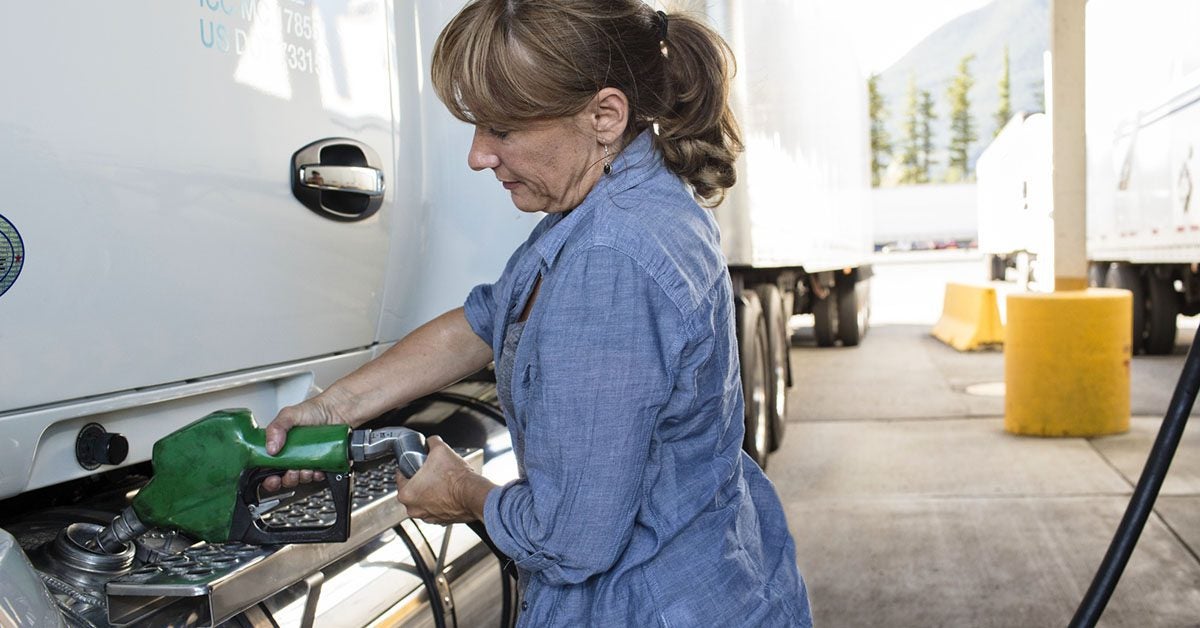These days, everyone’s feeling the pinch at the pump. For trucking companies, it’s especially painful, since fuel is the largest operating cost for most carriers. Controlling costs is one of the many reasons carriers often turn to the best fuel card programs for truckers.
Inflation has been a hot topic, and fuel has been the biggest driver of higher costs. Diesel prices were already rising steeply early in the year, with some of the largest weekly increases we had seen in years occurring in January.
Russia’s invasion of Ukraine led to even larger spikes, introducing more uncertainty and volatility into the market. But regardless of the outcome of that conflict, high inflation isn’t something that will go away overnight.
When fuel costs rise, how can you protect your profits? Let’s look at both revenue and expenses for ways you can take some of the sting out of high diesel prices.
Save at the pump with fuel cards from DAT.

What higher fuel prices mean for revenue
Higher fuel prices put pressure on truckload rates to stay high, but the way that works varies based on the type of transaction and the kind of freight.
With contract freight, fuel surcharges paid by shippers rise and fall based on the price at the pump. Surcharges also vary based on the type of trailer. For instance, flatbed carriers typically collect a higher surcharge since flatbed shipments are usually less aerodynamic and less fuel-efficient.
On the spot market, rates are often negotiated “all-in,” meaning that the line haul rate and fuel costs are combined into one rate. Those prices also tend to rise and fall along with fuel prices.
But in each scenario, the idea is that the shipper and/or broker shares the burden of fuel costs with the carrier or owner-operator. That means that carriers focusing on revenue alone to offset higher operating costs can easily find themselves in a bind.
How fuel cards can help manage rising costs
Historically, high fuel prices lead to more carrier bankruptcies than low truckload rates, which underscores how important it is to also focus on the expense side of the accounting ledger.
One of the easiest ways to put tighter controls on your diesel costs is to enroll in a fuel card program for truckers. Many of these programs provide discounts at the pump, but the best ones go even further.
Using a fuel card for your trucking company can give you access to:
- Fuel discounts
- Purchase controls and spending limits
- Fleet management and reporting tools
- Tire, hotel, parking and permit discounts
Another perk is that many fuel cards are also like loyalty cards. Each dollar spent earns points, which truck drivers can redeem for free showers or coffee, for example. You can also fill up without having to go inside and get a pre-approval on a credit card.
Fuel cards also give you deeper data about your purchases, such as odometer readings. Not only does this give you better insight into costs and fuel efficiency, it will also save you time when filing IFTA taxes.
DAT offers different fuel card options to best fit your trucking company’s needs, which include all the benefits listed above, plus much more.
Drivers can also use apps like the DAT One mobile app to find the best fuel prices based on their location. DAT One also integrates with DAT fuel cards, highlighting the best prices and allowing drivers to see discounted fuel card prices first at any given location.
Along with nearby fuel prices, the DAT One app includes trip-planning tools to help drivers find parking, truck services, trucker-friendly hotels, rest stops, scales, nearby loads and much more.

